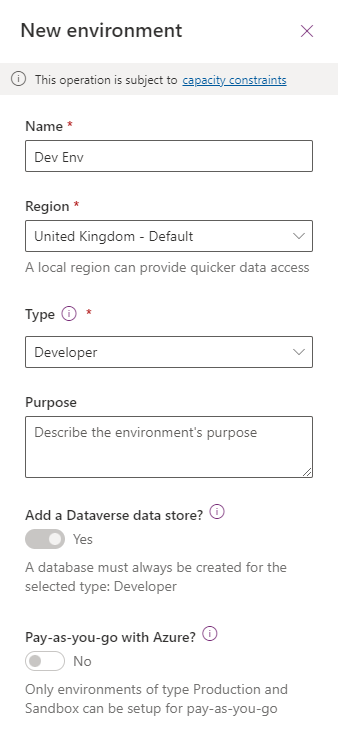- Published on
How to create a Power Platform Developer Environment
- Authors
- Name
- Tom Senior
Its always best to keep your testing and learning environment out of production, and that goes for Power Platform too. A developer environment in Power Platform lets achieve this while also accessing premium features like connectors and Dataverse for no extra cost!
Prerequisites - To follow this, you'll need a work or school Microsoft 365 account. You'll also need the Global Administrator or Power Platform Administrator roles.
Lets take a look how we can set one up.
Power Platform admin center
The place where we manage all of our Power Platform environments is the Power Platform admin center. Here we can also view Analytics, Billing and Tenant Settings for Power Platform.
If you head to the Environments tab on the left, you'll see all the environments that exist in your tenant.
Hit New at the top and you'll get the New Environment pane on the right. Fill in a Name, the region closest to you, then for Type select Developer.
Once thats done you can hit next and select your language and currency. If you're just learning with Power Platform be sure to check Deploy sample apps and data as that will give you some dummy apps and data to work with.
| Page 1 | Page 2 |
|---|---|
 |  |
And that's it, shortly you'll see your new environment created.
Switch Environment
Now to switch to that environment, head over to the Power Platform app you're using, in my case Power Apps. Then at the top right click the Environment button (orange below) and select your newly deployed developer environment.
Thanks for reading. Any questions or feedback - Twitter, LinkedIn or Email